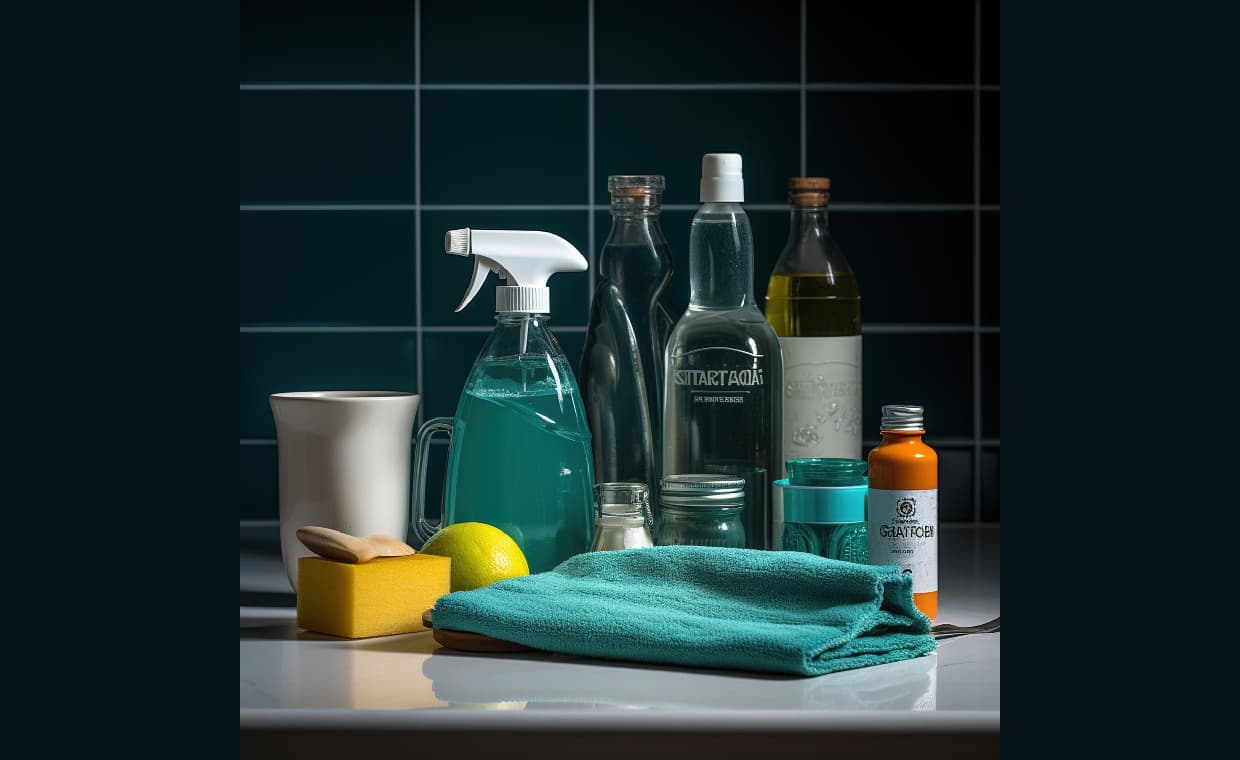
Cleaning solutions might seem like a straightforward concept – a quick squirt and a wipe, and voila, a spotless surface. However, the chemistry behind these solutions plays a crucial role in the effectiveness of the deep cleaning process. Understanding how different cleaning solutions function empowers you to choose the right product for the job and achieve optimal cleaning results. Let’s dive in deep about the chemistry behind cleaning solutions:
The Essential Ingredients in Cleaning Process
1. Solvents

Solvents play a crucial role in cleaning process. These form the base of most cleaning solutions. Water is the most common solvent, but depending on the application, other solvents like alcohol or citrus extracts might be used. Solvents dissolve dirt, grease, and grime, lifting them from the surface to be rinsed away. Household solvents like paint thinners, turpentine and dry cleaning fluids contain almost 100 percent solvent.
2. Surfactants

These are the workhorses of cleaning solutions. They lower the surface tension of water, allowing it to spread more easily and penetrate dirt and grime. Surfactants also act as emulsifiers, suspending oil and grease particles in the water so they can be rinsed away. Common surfactants include detergents, soaps, and foaming agents. Private households use surfactants like detergents and cleaning agents.
3. Builders

These ingredients help to soften hard water minerals that can interfere with the cleaning process. By binding to these minerals, builders prevent them from re-depositing onto the cleaned surface and leaving behind a filmy residue. One common example of a builder is baking soda.
4. Acids and Alkalis (Bases)
These can be included in cleaning solutions to target specific types of dirt. Acids are effective at removing mineral deposits, while alkalis (bases) are useful for tackling greasy messes and organic matter. However, it’s crucial to choose the right type and concentration of acid or alkali for the specific cleaning task, as using the wrong one can damage surfaces.
5. Chelating Agents
These ingredients bind to metal ions that can contribute to discoloration or staining. They are particularly useful for cleaning hard water stains or removing rust. White vinegar is a natural chelating agent.
6. Perfumes and Dyes

These are added for aesthetic purposes. Perfumes mask any unpleasant odours, while dyes can add colour to the cleaning solution. However, for sensitive individuals or those looking for fragrance-free options, products formulated without these additives are available.
7. Matching Solution to Surface
The effectiveness of a cleaning solution depends on several factors, including the type of dirt or grime you’re trying to remove, the surface you’re cleaning, and the chemistry behind cleaning solution itself. Here’s a closer look at how these factors interact:
i. Understanding Dirt and Grime :
Different types of dirt require different cleaning approaches. For example, greasy messes respond well to solutions with strong detergents that can emulsify fats and oils. Mineral deposits require an acidic solution to dissolve them, while organic matter like blood or plant stains might benefit from enzymatic cleaners that break down these substances.
ii. Surface Compatibility:
Certain cleaning solutions can be too harsh for delicate surfaces. For example, using a strong abrasive cleaner on a countertop can scratch the surface. Opt for gentler cleaning solutions or products specifically formulated for delicate surfaces like granite or stainless steel.
iii. Chemical Reactions:
The chemistry behind cleaning solution needs to complement the surface being cleaned. For example, using an acidic solution on marble can etch the surface, while using a strong alkali on aluminium can cause corrosion. Understanding the chemical properties of both the cleaning solution and the surface ensures a safe and effective cleaning process.
Conclusion
Cleaning a surface or house is not just a simple process but a chemistry hidden behind all of it. We need to focus on solving this puzzle of chemistry behind cleaning solutions. The concentration of cleaning solution whether it is mild or strong can affect the surface health. The water temperature, especially hot water, is known to be effective for cleaning greasy areas. You can always use scrubbing if essential for losing the stain.
Before you take a leave, here we share and interesting on house cleaning safety tips:






























